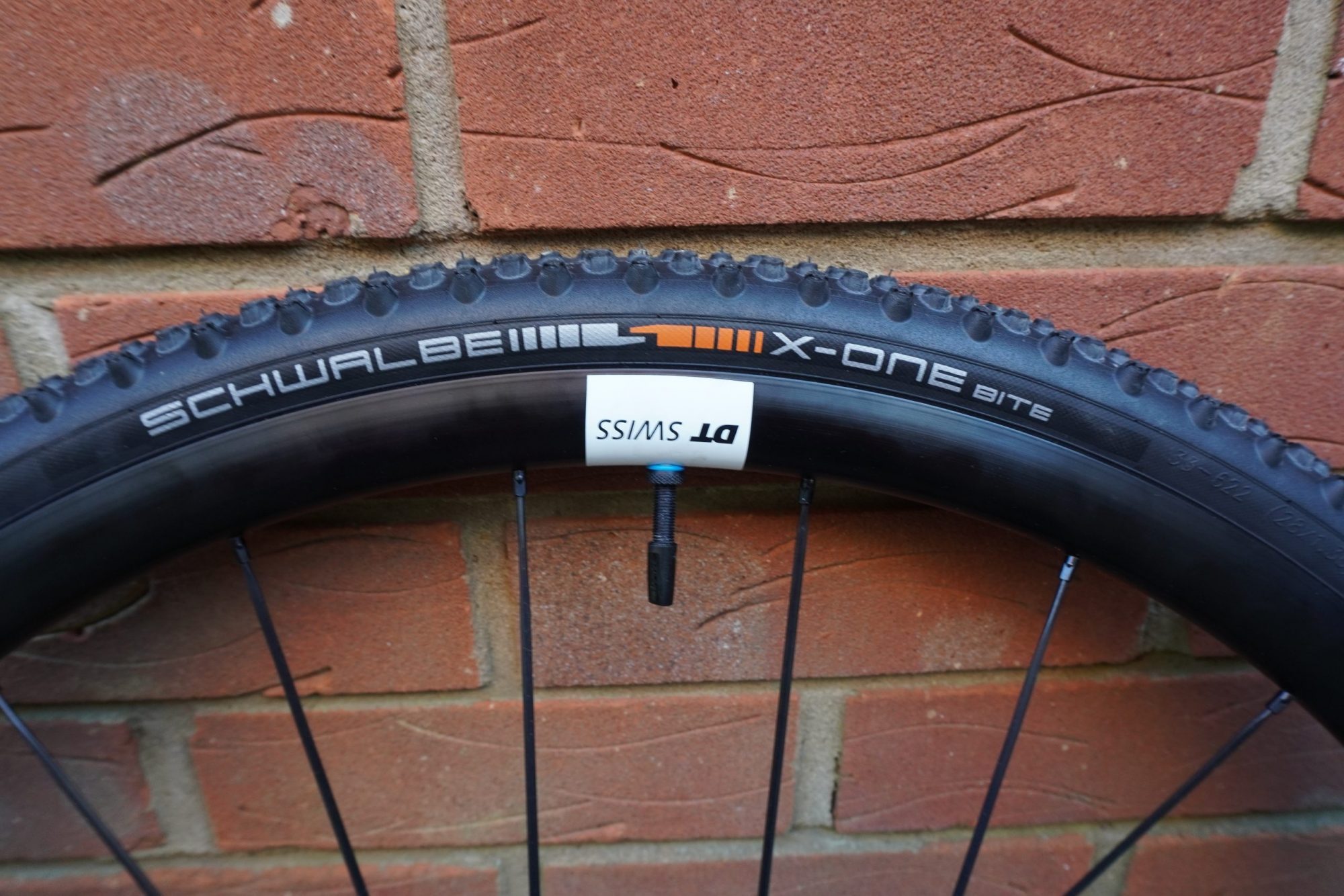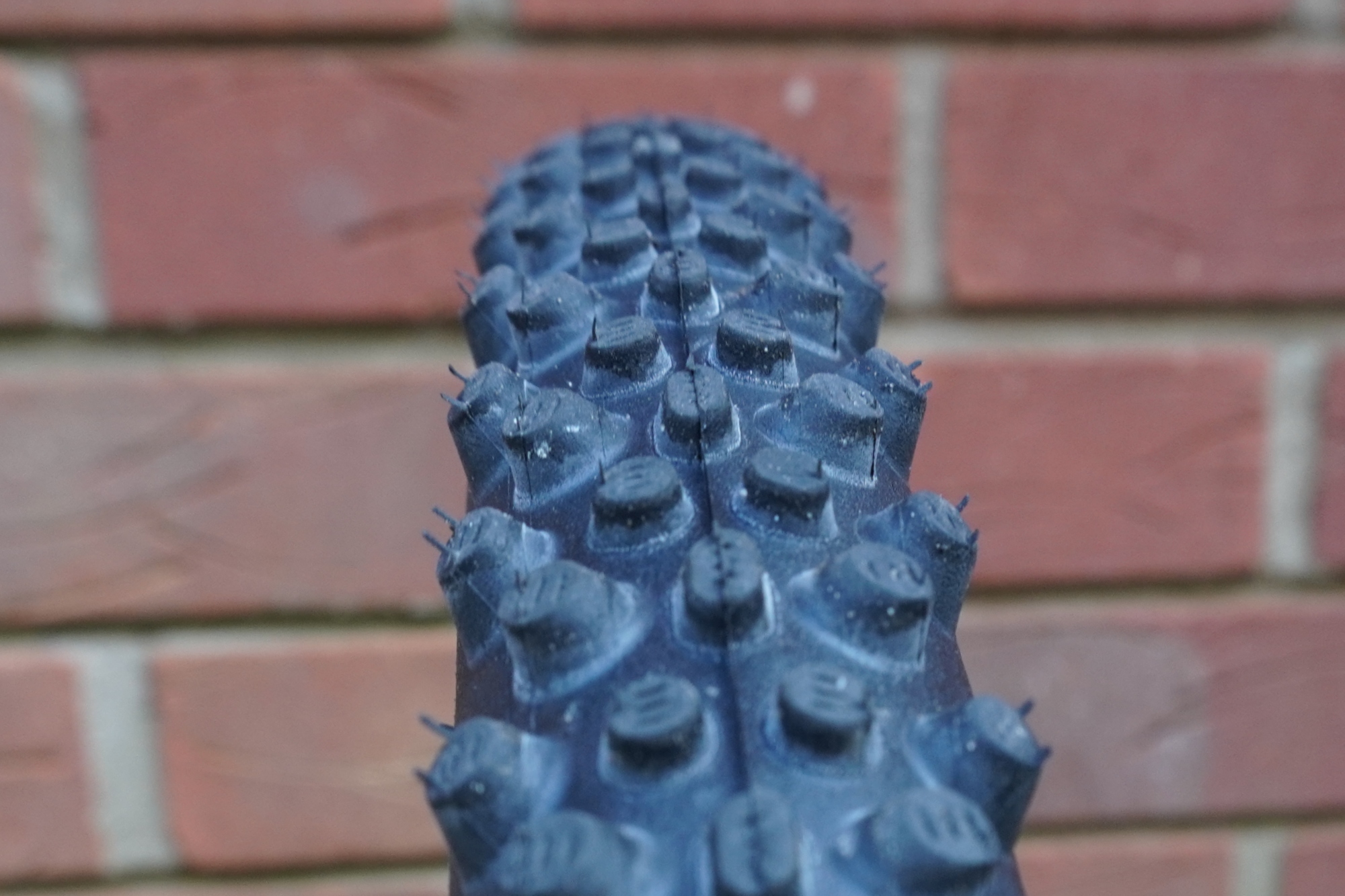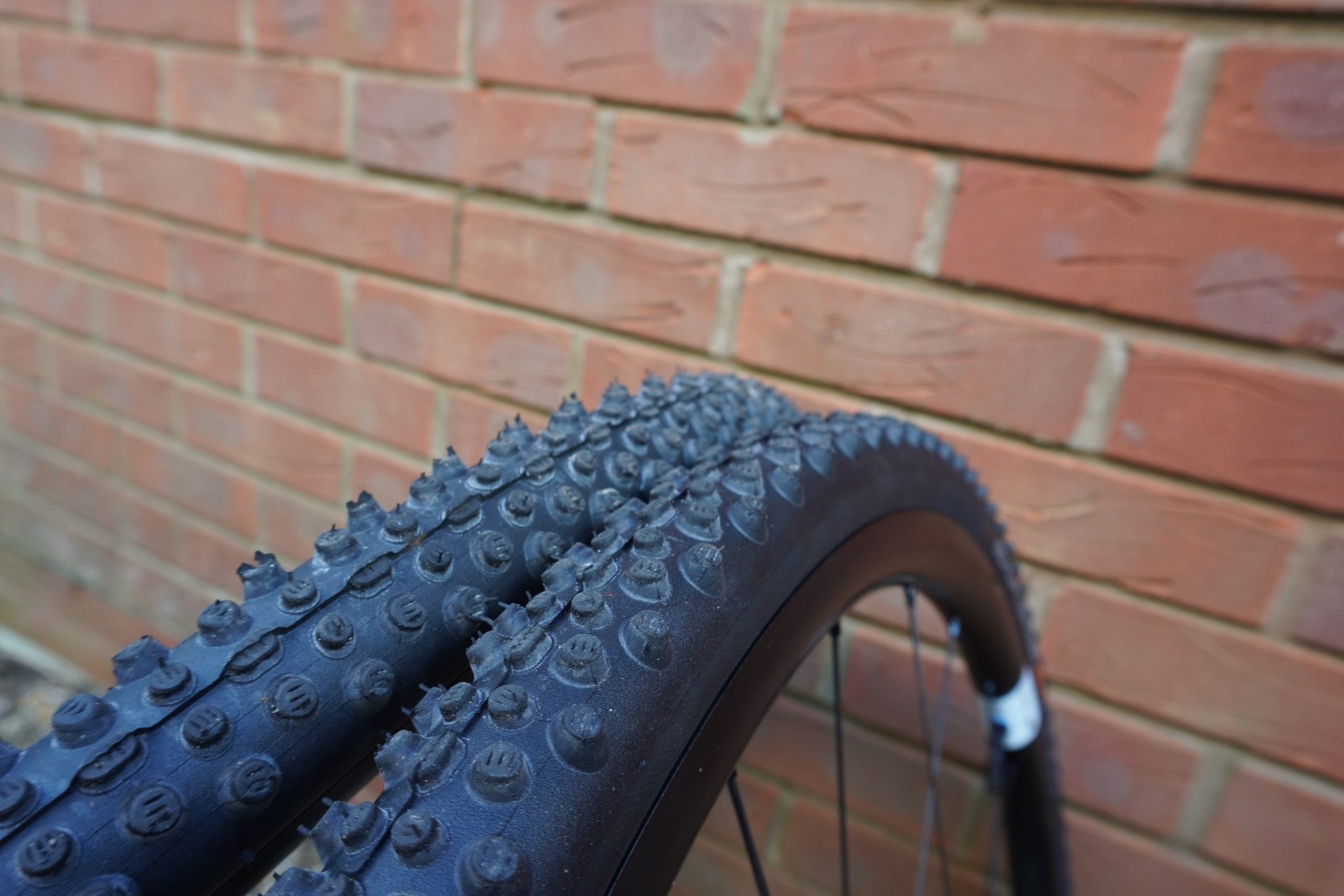Schwalbe X-One Bite review
Highly predictable grip is great for both cyclocross and winter gravel riding

The Schwalbe X-One Bite might be marketed as a cyclocross tyre, but the large amounts of predictable grip transfers excellently into UK winter gravel riding, when the trails turn to slop. The narrow 33mm width – although spot on for cyclocross racing – does mean you have to take a little more care on rocks and roots so as not to hit your rims.
-
+
Grippy
-
+
Predictable
-
+
Easy tubeless setup
-
-
Only comes in 33c
You can trust Cycling Weekly.

Although the Schwalbe X-One Bite is ostensibly a thoroughbred cyclocross mud tyre, it can make a great addition to a gravel bike, broadening the trails that can be ridden over winter, until the slop starts to firm up again around April.
>>>Read more: Best gravel tyres
It’s useful to note that the “X-One” denotes that the tyre is part of Schwalbe’s cyclocross range, whereas tyres with “G-One” in the name are part of Schwalbe’s gravel range.
Although there is both a “G-One Bite” and an “X-One Bite”, these are not a wider and a narrower version of the same tyre. The tread patterns are very different between them – reflecting the (typically) distinct demands of cyclocross and gravel and just how much “bite” is required.
Schwalbe X-One Bite: The construction
Unlike most other mud tyres, the knobs here are mainly cylindrical rather than the straighter edged more blocky designs we usually see. Schwalbe does admit that these other tread pattens would be able to provide more grip in one particular given direction – but in that case, the levels of grip would change dramatically, should you start travelling in a different direction.
The idea behind cylindrical knobs is that they provide predictable grip in all directions. So even when you are slipping sideways in the mud, you still know exactly where the limits are and you won’t get any sudden surprises as the direction of travel changes.
Down the centre of the tread, these cylinders elongate into vertically oriented ellipses, which are designed to act a little like the keel of a boat, helping with cornering traction and off-camber banks.

As a cyclocross tyre, the X-One Bites are designed to provide the maximum grip within the UCI’s limit on tyre width of 33mm. To this end, the profile is much flatter than you would normally expect to see, so as to put as much rubber as possible in contact with the ground.
The tyres are tubeless, as you would expect, and they are only available in one width, 700x33c.
The ride
Setting up
As tubeless setups go, this was among the easiest. Getting the tyres onto the rims was admittedly a little harder than with the supplest of clinchers, but it was by no means a wrestling match – certain clinchers would even put up more of a fight.
Inflation was straightforward as well, popping onto the rims first time without even needing to add sealant first. After adding in the sealant and leaving the tyres overnight, they had barely lost any pressure and there was no weeping at the sidewalls.
So far, so impressive.
For reference, I was using a set of DT Swiss G 1800 rims, with an internal width of 24mm.
Hitting the trails
Pedalling along the roads and off to the woods, there is a perceptible increase in rolling resistance over a gravel tyre. Although the tall and soft knobs are well suited to the dirt, they don’t transfer so well to the road. If you’re in the market for a set of tyres to use all year round, these are probably a little too specialist for that – the Schwalbe G-One Ultrabites would be a better bet.

But in the domain for which they are intended, the X-One Bites really excel. The grip is genuinely super predictable, in twisty sections when sideways is as much the order of the day as forwards, I always knew exactly how far I could push them. While on slippery off-camber clay, the long centre knobs did their job well, keeping me on the high line and not washing out.
Riding up steep and muddy sections, for the most part there was still plenty of grip, although I did notice a little more rear tyre spin than with other cyclocross mud tyres I’ve used.
This wouldn’t concern me for use in a ‘cross race, because at those moments I would generally be off the bike and running anyway. But for general use, when you’d prefer to keep your feet in contact with the pedals rather than the ground, it is worth considering whether the riding around you requires a tyre that grips best in a straight line or is predictable in the corners.
Racing or riding?
Schwalbe’s branding of the X-One bite couldn’t be clearer: this is a tyre designed for the muddiest of cyclocross courses – and as a pure cyclocross tyre the X-One Bite does perform excellently.
So, to some extent, it seems a little unfair to judge it on how well it performs in more general riding, on trails with the kinds of rocks and roots seldom seen on a cyclocross course.
But I do think this aspect is worth discussing, because out of the entirety of Schwalbe’s range, I think these are the ones best suited to gravel riding though a UK winter, with their excellent grip in the mud.
Though with that said, they do have their limitations in this regard – as is probably to be expected from a tyre that wasn’t designed with this kind of riding in mind.

Although coming up at spot on 33mm on my 24mm rims is exactly what you’d want from a pure cyclocross race tyre, this narrow width does mean you have to take a lot more care of roots and rocks, as it is so easy to shoot through the small amount of cushion the tyres offer and whack a dent into your rims.
This does make setting the tyre pressures an incredibly delicate balancing act between grip and rim protection. But with the tyres providing so much confidence in the slop, I found being a little more careful of square-edged hits an acceptable trade off.
With that said, I do wish there were a 37mm version of this tyre. Just a little more volume would really help to cushion those impacts and would fill in that gap in the range between the cyclocross and gravel tyres.
Value
At £60 each, the Schwalbe X-One Bites are certainly quite expensive. The Challenge Limus TLR is in the same ballpark at £54, but the Specialized Terra Pro 2Bliss Ready significantly undercuts both coming in at £45.
Although in my experience, the Specialized Terra Pro comes up pretty wide, with the nominally 33mm version measuring 36mm on a set of 24mm internal width rims. Great for a bit of bonus cushion when out on the trials, but something you would want to be careful with if entering any UCI sanctioned cyclocross races.

Thank you for reading 20 articles this month* Join now for unlimited access
Enjoy your first month for just £1 / $1 / €1
*Read 5 free articles per month without a subscription

Join now for unlimited access
Try first month for just £1 / $1 / €1
Get The Leadout Newsletter
The latest race content, interviews, features, reviews and expert buying guides, direct to your inbox!

After winning the 2019 National Single-Speed Cross-Country Mountain Biking Championships and claiming the plushie unicorn (true story), Stefan swapped the flat-bars for drop-bars and has never looked back.
Since then, he’s earnt his 2ⁿᵈ cat racing licence in his first season racing as a third, completed the South Downs Double in under 20 hours and Everested in under 12.
But his favourite rides are multiday bikepacking trips, with all the huge amount of cycling tech and long days spent exploring new roads and trails - as well as histories and cultures. Most recently, he’s spent two weeks riding from Budapest into the mountains of Slovakia.
Height: 177cm
Weight: 67–69kg
-
 A bike rack with an app? Wahoo’s latest, and a hub silencer – Sea Otter Classic tech highlights, Part 2
A bike rack with an app? Wahoo’s latest, and a hub silencer – Sea Otter Classic tech highlights, Part 2A few standout pieces of gear from North America's biggest bike gathering
By Anne-Marije Rook Published
-
 Cycling's riders need more protection from mindless 'fans' at races to avoid another Mathieu van der Poel Paris-Roubaix bottle incident
Cycling's riders need more protection from mindless 'fans' at races to avoid another Mathieu van der Poel Paris-Roubaix bottle incidentCycling's authorities must do everything within their power to prevent spectators from assaulting riders
By Tom Thewlis Published
-
 Man hands himself in to Belgian police after throwing full water bottle at Mathieu van der Poel during Paris-Roubaix
Man hands himself in to Belgian police after throwing full water bottle at Mathieu van der Poel during Paris-Roubaix30-year-old was on Templeuve-en-Pévèle cobbled sector when television pictures showed the bottle hitting him in the face
By Tom Thewlis Published